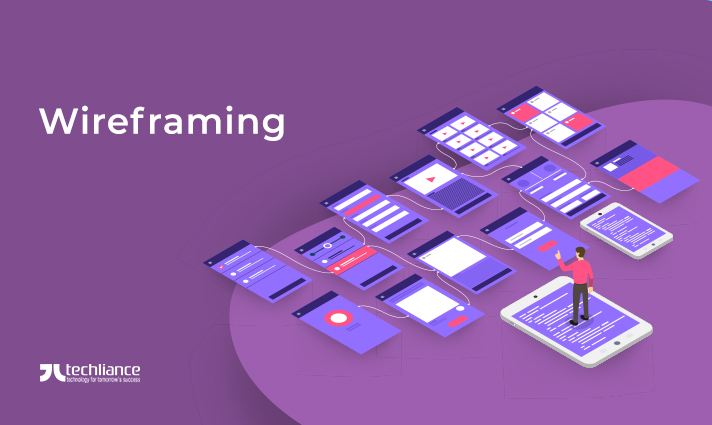There is a misconception in the IT industry – only companies with big-budget are able to plan, execute and develop flawless mobile apps. The small-sized companies and upcoming entrepreneurs must feel encouraged about launching mobile applications, keeping in mind that there are ways to reduce mobile app development cost involved.
In the IT industry, it is all about having the smarts and finding out ways to make it work for you. The ultimate goal for a mobile app development company is to successfully craft mobile applications that are well-received in the market. There is no reason for you to not follow their lead.

Best ways for mobile app development cost reduction
This article provides you the leading tips on how you can subside the price of mobile apps and still produce a smart application that resonates well in the consumer market.
- Be sure about the project scope
- Select the tools, technologies, and platform
- Keep a tab on competition
- Do the homework
- Wireframing
- Minimalism is the key
- Basic feature-set in the start
- Hiring the right resources
- Integrate plugins to improve functionality
- Extensive testing
Let’s examine the essence behind these workable tips that can decrease the mobile app development cost significantly.
Be sure about the project scope
The wise men of Information Technology always advise to first lock the project scope. If you are not sure about your requirements, you will never be certain about what you want to develop. As a result, it is important to have a resource that helps in writing down clear project requirements with end-to-end business and scope in complete detail. In the waterfall methodology, Project Managers prefer developing high-level business requirement specification documents. In Agile, this concept is translated into the form of epics and user stories.
It is also important to have a proper sign-off from the stakeholders about the requirements. Many times, certain stakeholders are not aware of the project scope and consider an aspect or a feature to be included/excluded in the project. The later-on surprises or shocks can result in project re-work causing a heavy drain on the project’s finances.
When you outsource your project to a third-party company, they usually associate with a consultant whose aim is to help gain clarity about the project requirements from the very start of the project. Even if you have a slight idea about your project needs; ad hoc discussions, interviews, brainstorming sessions, and many requirements elicitation techniques can help you achieve a certain level of clarity about what you want to develop.
Select the tools, technologies, and platform
When you conduct market research about your user base, it is also important to know about the platform that your users would prefer. With less budget in your hands, you can either opt for an iOS or an Android mobile app. Both require specific development and two separate projects for mobile app development on these platforms.
The middle way is to go for cross-platform app development through React Native. However, the expertise, resources, and cost for each of these options vary. Your final decision is dependent on your existing budget and the required features. If the quality of the mobile application is paramount, then native (iOS and Android) apps are the answer. If you want to go the route of a hybrid application, then top cross-platform mobile app development companies can save you substantial expenses, while delivering a viable smart solution.
Keep a tab on competition
Many business owners have a vague sense of what they want in their mobile apps. Sometimes they even claim that the mobile app will be cutting-edge, amazing, and different from the competition. But the benchmark for measuring these statements is subjective. After all, what is cutting-edge? And an amazing app for one person may not be that great for another.
Lastly, being different from your competition is not really a great way to market yourself. Consider this: the reason your competition is doing business in a certain way is on the basis of in-depth market research about consumer preferences and behavior. It is important to pay heed to this aspect and explore what the competition is up to.
For example, you are a fashion outlet store and you know that your competition has a mobile app with extensive customizable options for the consumer. That is a feature you should pay heed to because consumer fashion is all about providing preferences to users based on their browsing habits. Before you start off your mobile app development project, it is imperative to keep a close eye on your competition and retrieve the major elements of their mobile app for your benefit.
Do the homework
Another aspect is to perform your homework in a proper way. It is extremely important to conduct thorough market research and find out all the crucial elements your mobile app should include. The wish-list should be gathered from hybrid sources such as competition, online research, reading user reviews, general behavior patterns, analysis of large bulk of consumer data (preferably through a data analyst), dispatching and then receiving filled out a questionnaire from end-users about what they would prefer in a mobile app, etc.
Wireframing
This is one of the most important aspects that are overlooked while working on mobile app development projects with a low budget. This is probably because business owners do not think too much about the look and feel and design of the product. They plan extensively for other areas while the screen mockups or wireframes determine the product flow, its usability, and the final look. Even if you have rough sketches of how the product screens would look, they go a long way in visualizing the product features – giving higher visibility to the developers in creating a more viable product.

Minimalism is the key
Not many upcoming businesses can afford high-end designs for their mobile apps. Let’s face it, innovation requires money. If you hire a high-end user interface (UI) designer for creating a sleek mobile design, that will cost you extra money. Instead, why not go the cost-effective way by keeping a minimalistic and simple design for the app. This will also help you develop a mobile app that is easy to use with fewer hiccups and roadblocks along the mobile app development journey.
Basic feature-set in the start
Instead of bombarding the user with a variety of features, why not have a limited set of features in your beta app? Yes, you read that right. It is not prudent to release a full-throttle app in the very beginning especially when you are under a certain budget. You can decide on keeping a minimal set of features that can be well-coded and well-tested to give users a proper look and feel with usability as the main attribute of the mobile app.
This way, your users will be happy with the features, even though they are not that extensive at the start. It will help you retain the existing user base, while it will also attract potential users for a market expanse and further increase in revenue. Once you have broadened your horizon, you can get more invasive in your feature development approach.
This concept is called releasing a minimum viable product. In fact, in a survey about the causes of startup failures, it was stated that 42% of businesses failed because there was no market need. So, it is best to release a basic feature-set mobile app first to get the market response for your further follow-up as necessary.
Hiring the right resources
Then comes the decision of choosing the developers for your project. You can hire resources for an in-house project or completely outsource the project to a third-party IT firm. By developing a complete in-house team, your project costs will spike because hiring resources just does not mean that you are hiring them for their services. You also have to provide them with office space, equipment, and other add-ons associated with maintaining a project team.
When you outsource your project, you are heading towards a fixed cost and scope model. This fixed pricing, controlled scope strategy allows you greater flexibility in curbing the boundaries while the internal decision-making is taken care of by the outsourced company.

Integrate plugins to improve functionality
The concept of reusability goes a long way, especially in the case of plugins that help you reduce the project cost in a significant way. There are extensive online sources of available plug-ins that can be customized as per your personal preferences. If you hire experienced resources, they probably have many workarounds for adding plugins to save the development time of the project.
Extensive testing
Make sure to thoroughly test the product features through automation and manual testing. There are many ways to test the mobile application and ensure that it holds out on its own in times of higher user engagement, scalability, and the most basic question: does the feature breeze through in the happy business scenario.
Mobile app development cost reduction – FAQs
The following are the most frequent questions (FAQs) that companies seek answers to while finding tricks to minimize the mobile app development cost involved.
This is more of a budget question. Big companies usually invest $500,000 to $1,000,000 in their mobile app development quest. Expenditure of medium-sized companies ranges from $150,000 to $500,000. If you are a small-sized company then it should cost you anywhere from $50,000 to $100,000.
The price of a mobile app depends on the features. A basic application can cost around $25,000. Medium complexity apps cost from $40,000 to $50,000. Expenditure on a high functionality application can range from $100,000 to $500,000.
If you outsource your project app development, then the costs are lower around the $50,000 range (considering the $50 per hour hire for a resource). However, if you take up the project development venture yourself; the costs become double or quadruple with engagement level on many factors such as seating, office equipment, contractual obligations, etc. to name a few.

Final thoughts
By applying all these factors, your mobile app development cost can significantly get lower. If you are looking into developing a cost-effective mobile application; then USA-based software development companies like Techliance can be the perfect choice for you. Look no further than Techliance, a renowned technology partner for companies across the world. This humble IT firm is prominent among its counterparts and has deployed plenty of mobile apps for clients. A press release about distinguished US software development firms is a testimony to its brilliance.
Techliance develops seamless mobile apps for B2B and B2C companies while keeping costs low. Talk with Techliance today for a discussion about your mobile app idea. Witness it become the next big thing from ideation to development and deployment.




